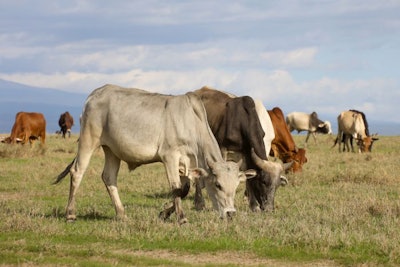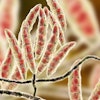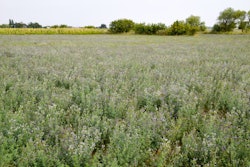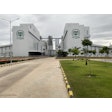
Kenya’s president has announced new government plans to create 50 feedlots to rear livestock especially for export.
With the support of strategic partners, the initiative creating these “special zones” across the country aims to mitigate against the effects of climate change, as well as to secure the supply of quality livestock and meat for local and export markets.
President Uhuru Kenyatta made the announcement at the official opening of the 2018 Livestock Breeders Show and Sale in Nairobi this month, according to the presidential website.
The feedlots are to be located across Kenya, in regions with dense livestock populations, and in those most susceptible to drought, he said.
This is just one of a series of recent initiatives aimed at supporting Kenyan agriculture.
“My administration has an insurance program for cushioning farmers against livestock losses caused by drought,” Kenyatta said. “This year, we expect to cover 110,000 livestock, thus protecting 22,000 households.”
As part of this broad program of improvements for Kenya’s livestock chain, the government has supported the establishment of several liquid nitrogen plants across the country to improve the genetic potential of the national cattle herd by ensuring adequate supplies of top-quality bull semen.
New approaches to solving livestock challenges
Low productivity, poor breed characterization, and inadequate breeding services are among the challenges faced by the country’s livestock and poultry farmers, and identified by the Kenya Agricultural and Livestock Research Organization, KALRO.
Partnered with the United State Agency for International Development (USAID), KALRO is investigating an increase in calf mortality and cow infertility in Kakamega county in the west of the country, reports the Kenya Broadcasting Corporation.
Some farmers have blamed these problems on dead semen, an issue that would be alleviated by the government’s initiative to provide appropriate freezing and storage facilities.
KALRO’s mission is to provide information on appropriate technology to help local producers overcome these and other constraints, which include sub-standard animal husbandry and nutrition, disease challenges, high input costs and poor market access.
Livestock farmers sometimes have to travel great distances on foot with their animals to make a sale when middlemen find more profitable areas to trade nearer to large cities.
However, in Samburu county in the north of the country, The Star has reported the passing of the County Livestock Sale Yards Bill, which aims to improve livestock markets in the area.
To mitigate the effects of climate change, Kenyan poultry farmers have been successfully experimenting with different breeds of bird, and broadening the range of feed ingredients they employ.

















